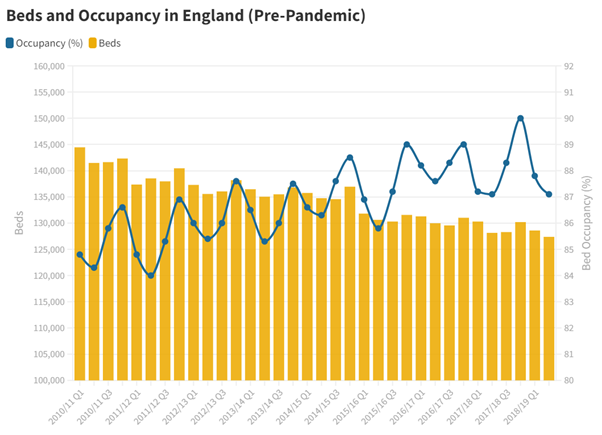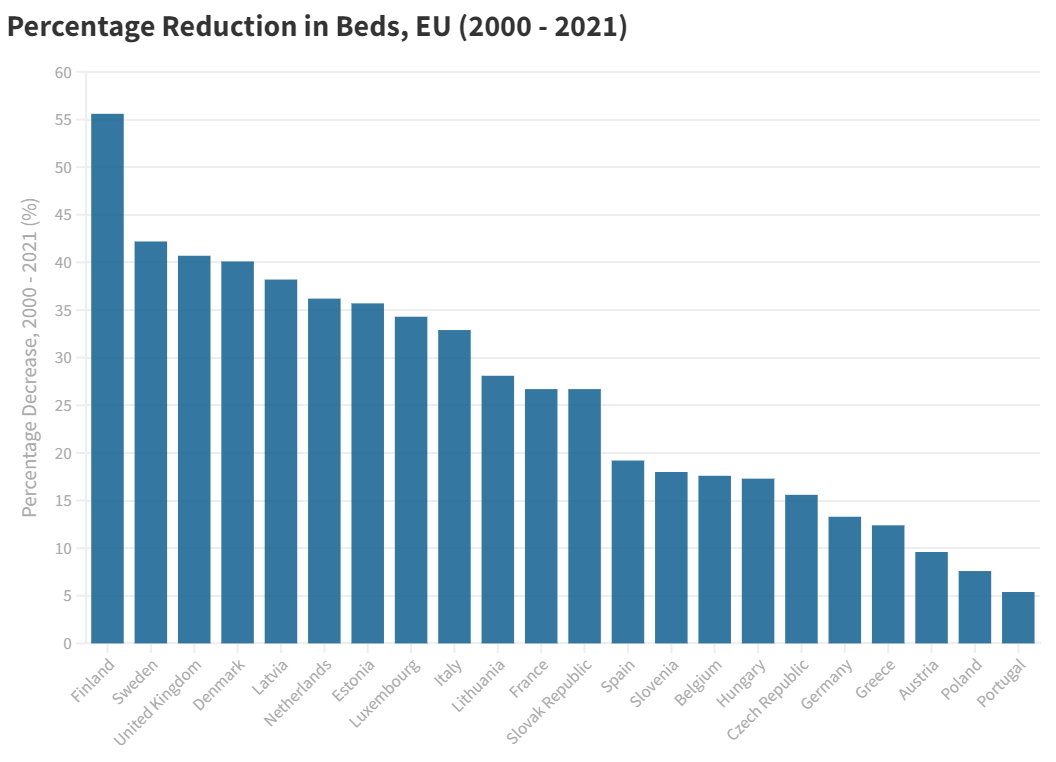How we can deliver more beds for our NHS
Royal College of Emergency Medicine
The hospital bed remains a core component of acute care in the NHS, and the data suggest that the cuts to bed numbers in the past ten years have gone too far. Full hospitals lead to full emergency departments and delayed ambulance handovers.
In 1987, the NHS in England had a bed capacity of almost 300,000. By 2010, this had reduced by over half, and at the last count, Trusts in England had a shared bed stock of a little under 130,000.
The Coronavirus pandemic had a substantial effect on bed occupancy due to falling demand, but prior its onset, the trend in bed availability and usage was clear. The number of beds was falling year after year, while occupancy was steadily rising. Occupancy is measured at midnight and is the number of occupied beds divided by the number of available beds. Occupancy over 85% is consistently associated with long waiting times in emergency departments and increased inpatient stays.

While levels of elective care are generally predictable and can be carefully managed, demand for emergency care ebbs and flows, and a certain amount of excess bed capacity is required to manage any potential surges.
.png)
Compared to other healthcare systems, the UK has very few beds. At 2.4 beds per 1,000 people, the UK sits second from last in terms of EU nations, just ahead of Sweden (2.1), but behind the other 21 nations. In order to achieve the EU average of 4.75 beds per 1000 population (not including the UK’s own figure), the UK would need over 317,000 beds, effectively double what it has now.
Furthermore, the UK has also cut beds at a much faster rate than other countries. Between 2000 and 2021, it saw a reduction of 40% in its bed stock, surpassed only by Finland and Sweden.

A broad consensus has formed in recent years that the NHS in the UK requires more beds. Based on RCEM’s estimations, we believe the NHS is likely to need in the region of 8,500 more beds over the next few years in order to reach (and maintain) pre-pandemic levels of performance. RCEM is not convinced that the establishment of virtual wards will help.
RCEM’s Recommendations
- We recommend that an additional 4,500 actual physical beds across the United Kingdom be made available between now and next Winter, and approximately 8,500 more over the next five years.
- The allocation of additional beds should be made available based on a local assessment of population needs and not worsen health inequalities.
- Hospitals should define their own thresholds for occupancy, and justify if they exceed 85%
- Any new hospital buildings should increase the proportion of side rooms in order to restrict the number of beds made unavailable through infection and reduce nosocomial infections.
- There needs to an increase in Mental Health bed capacity. Assessment areas for short term, resource intensive assessment of people suffering a mental health crisis would improve care and patient experience.
